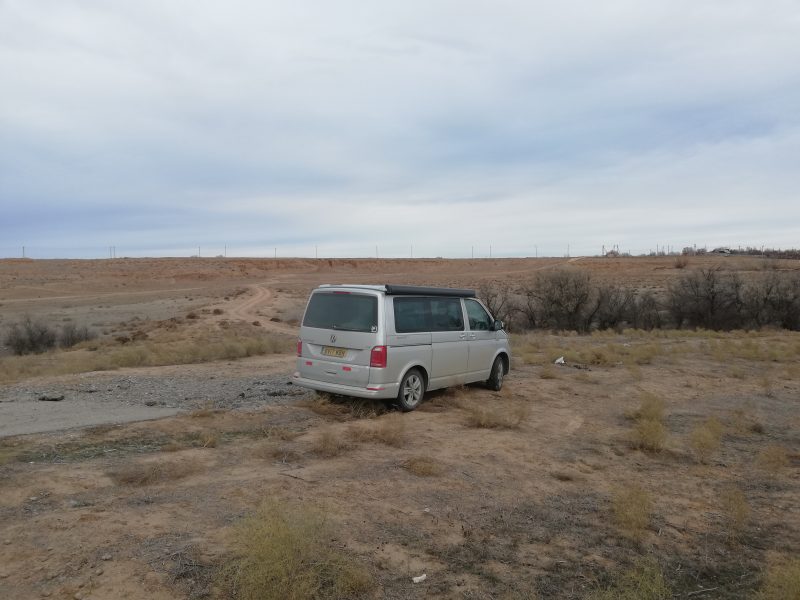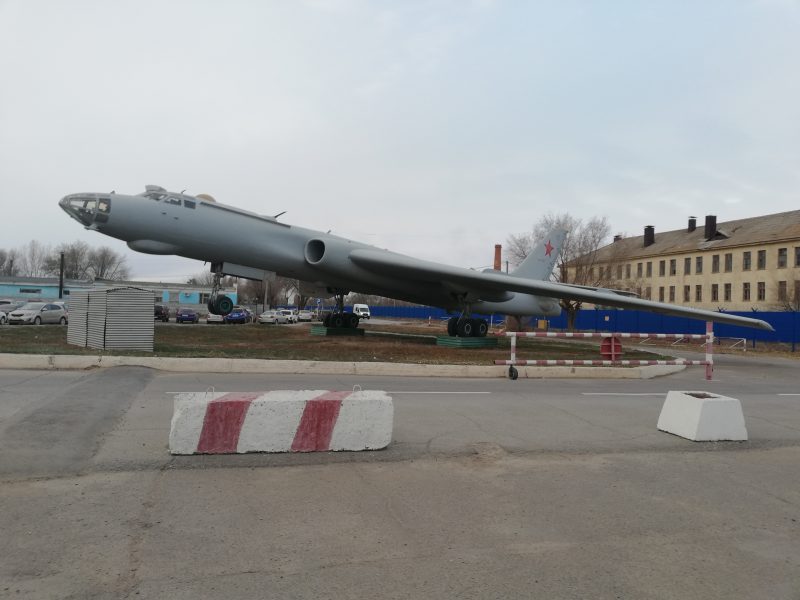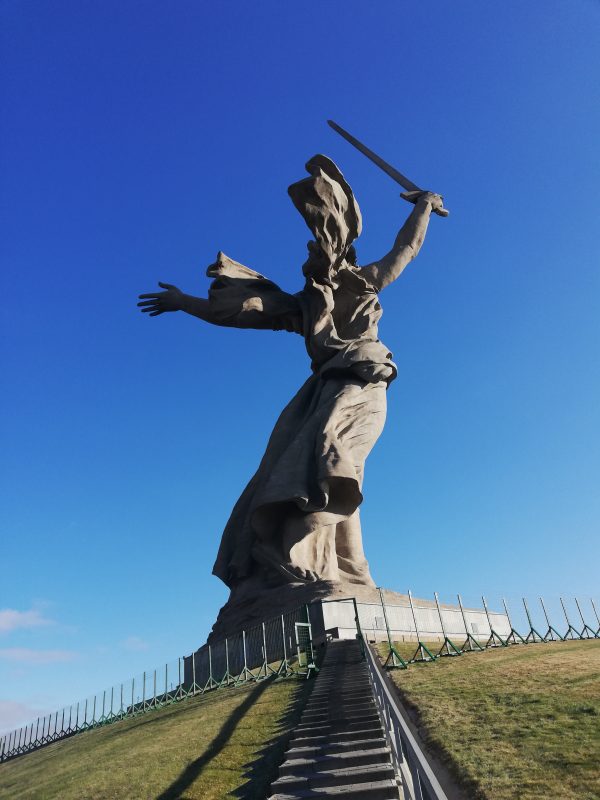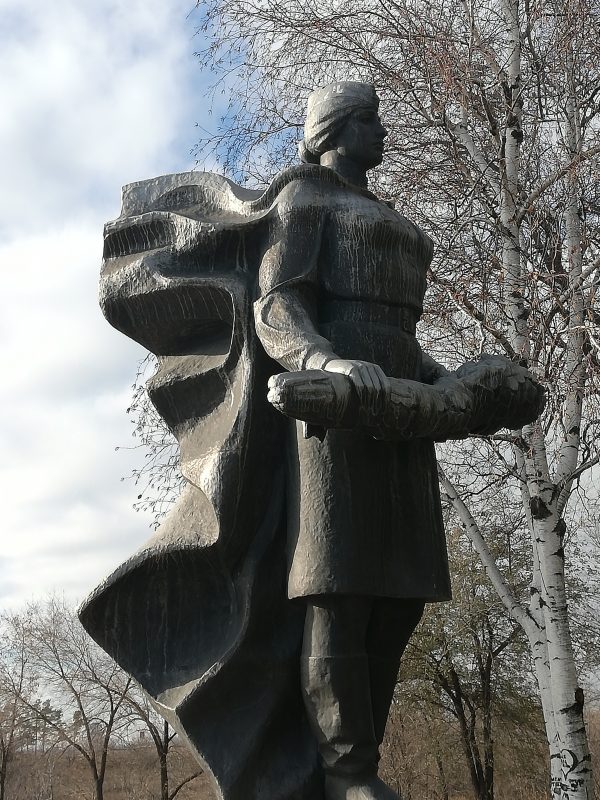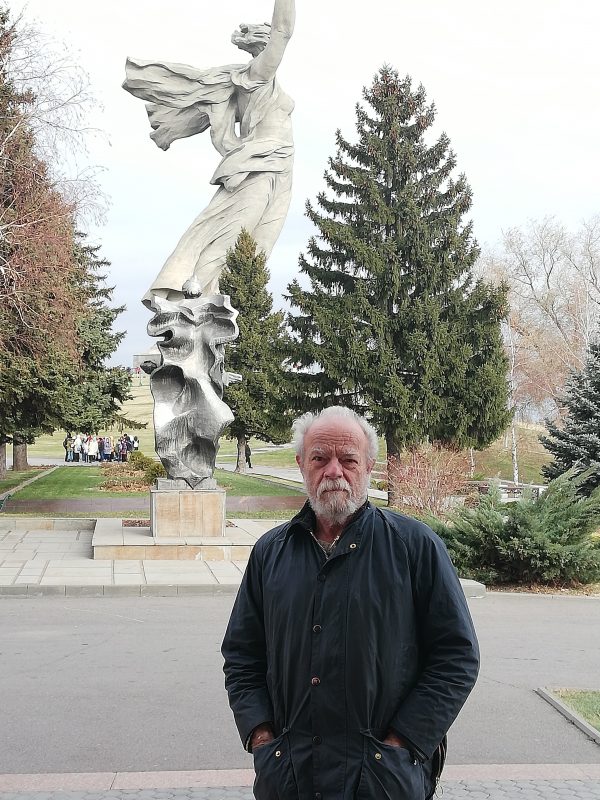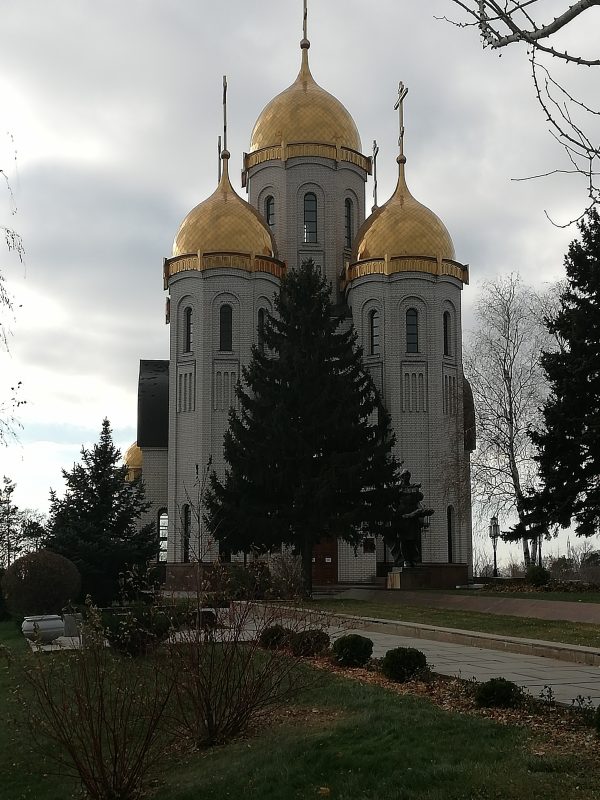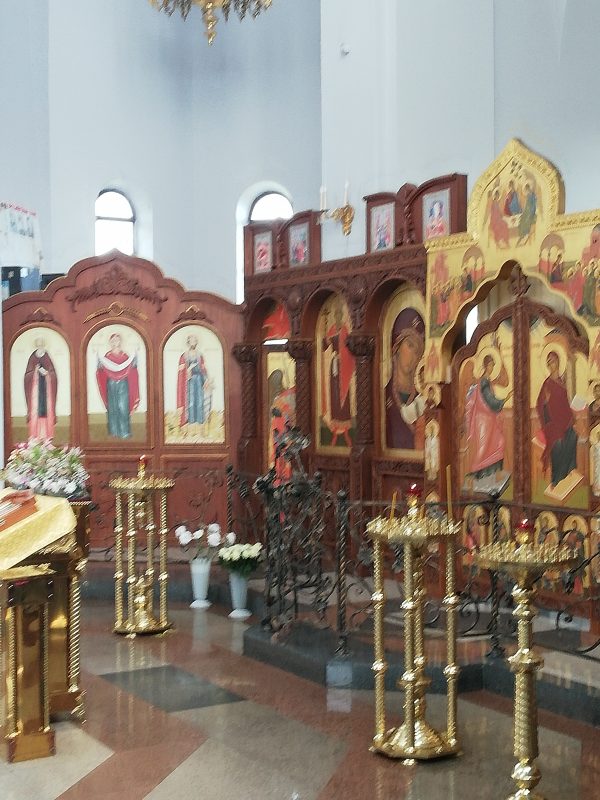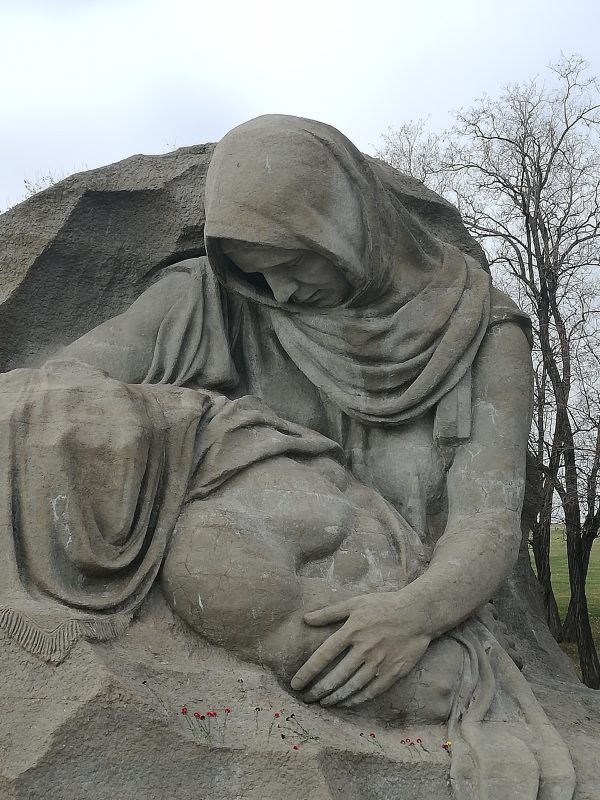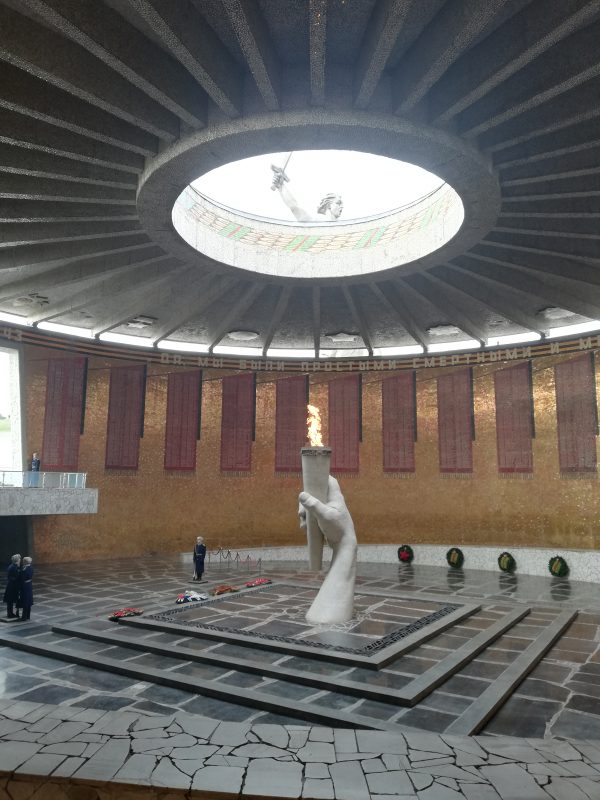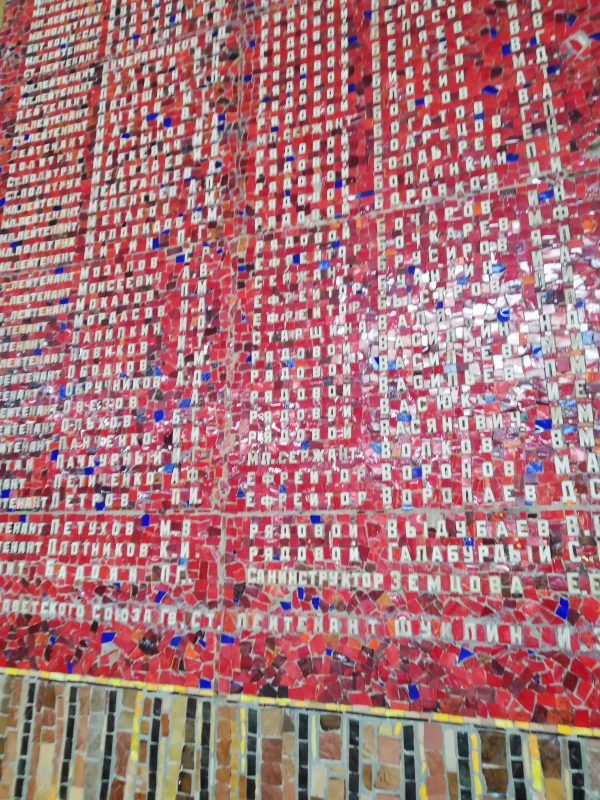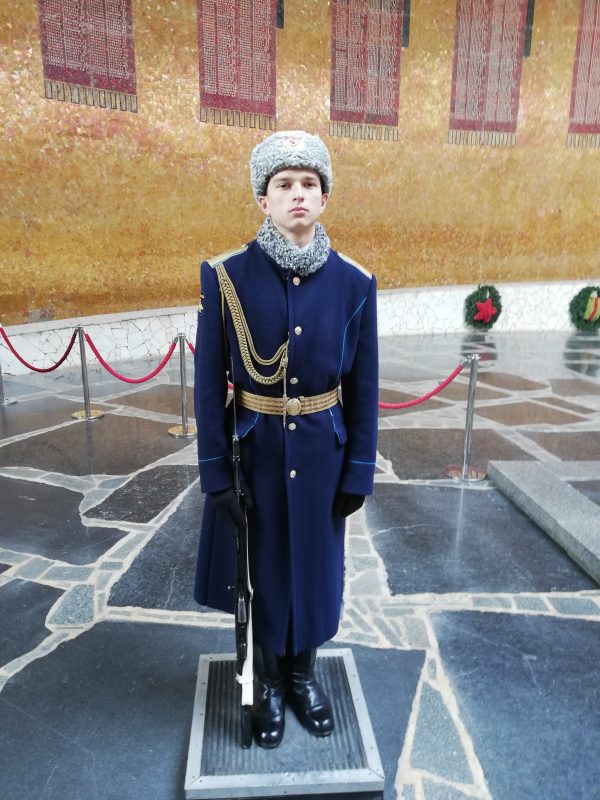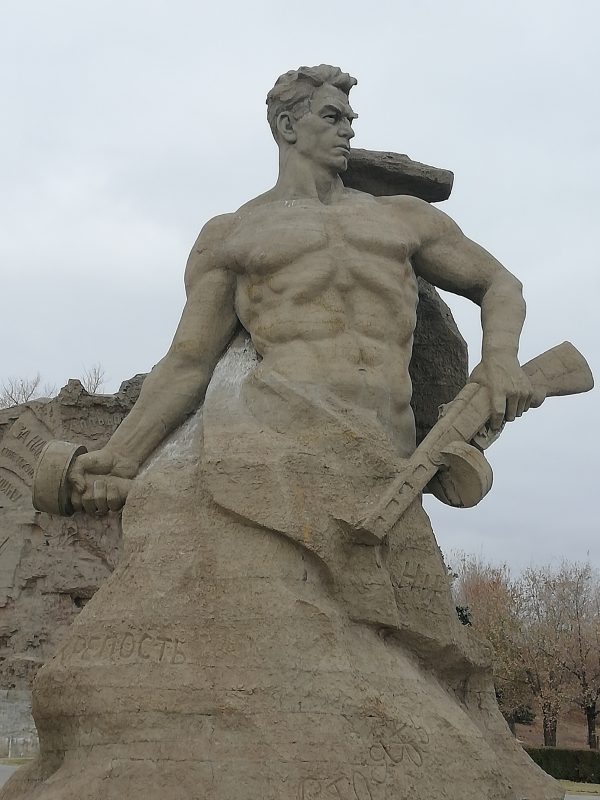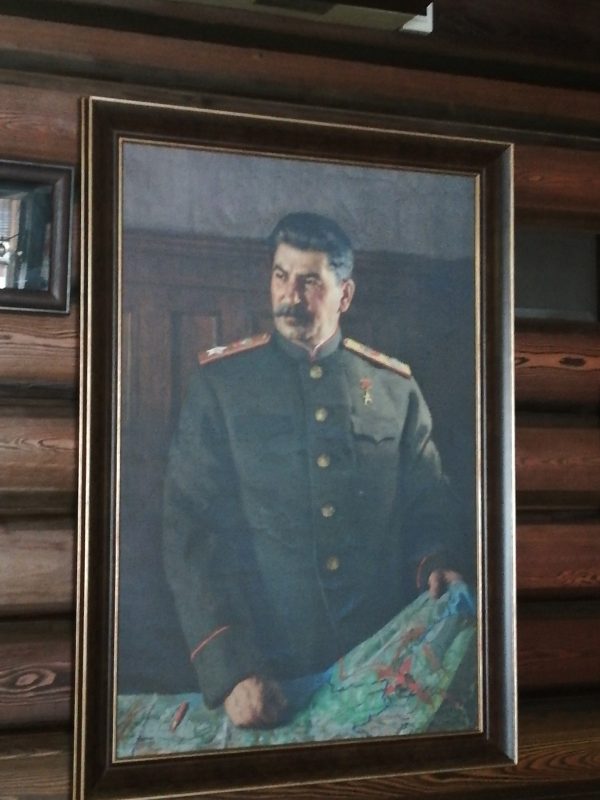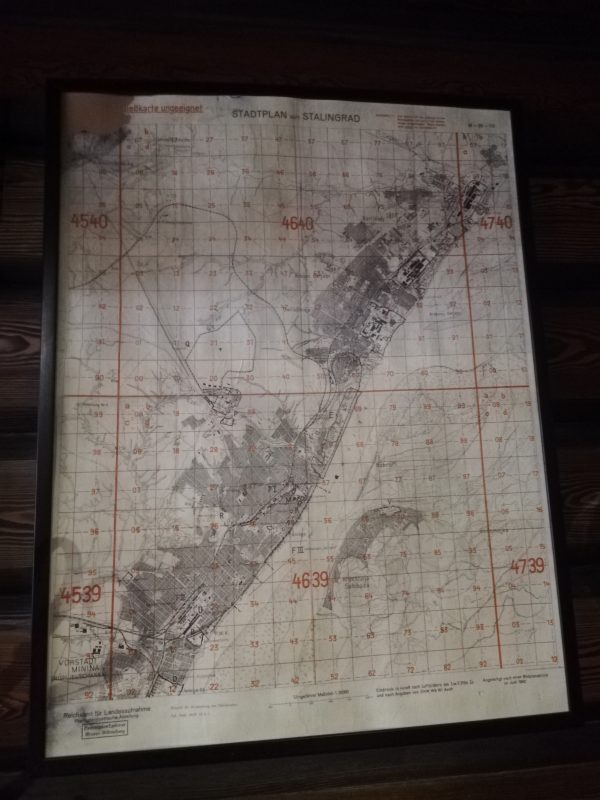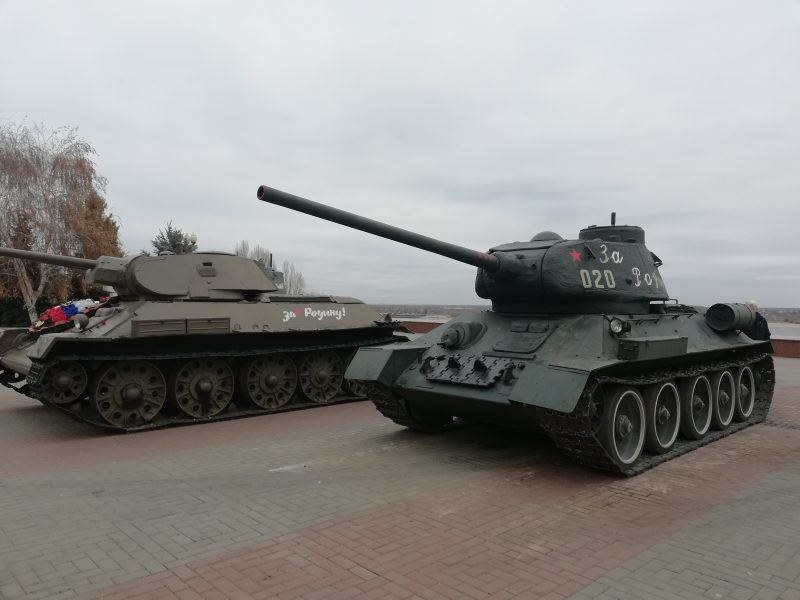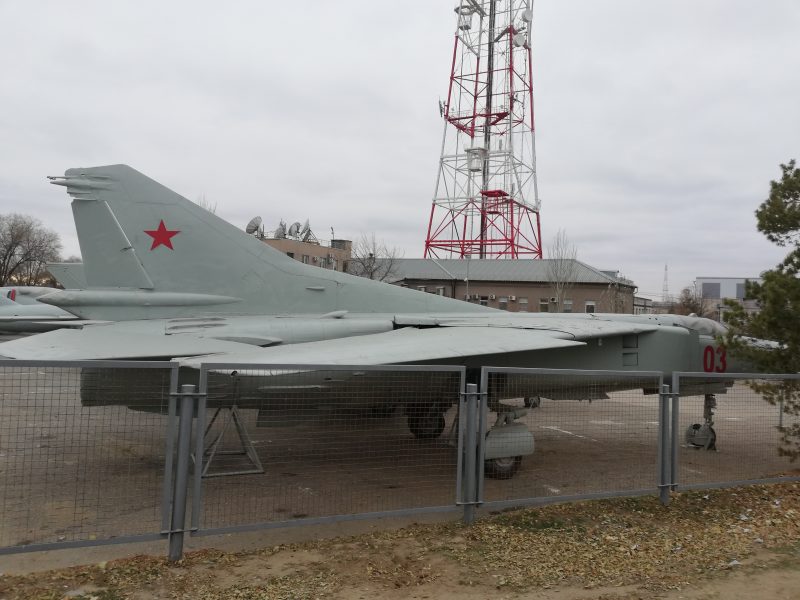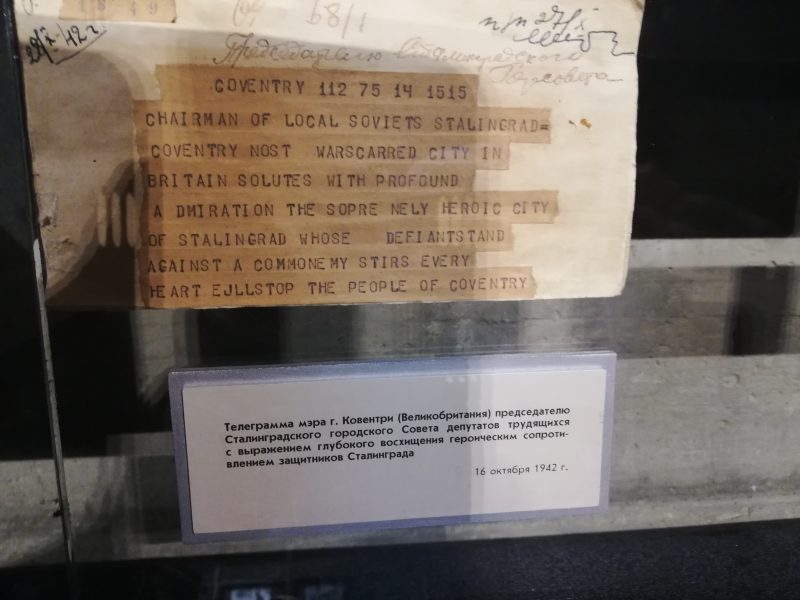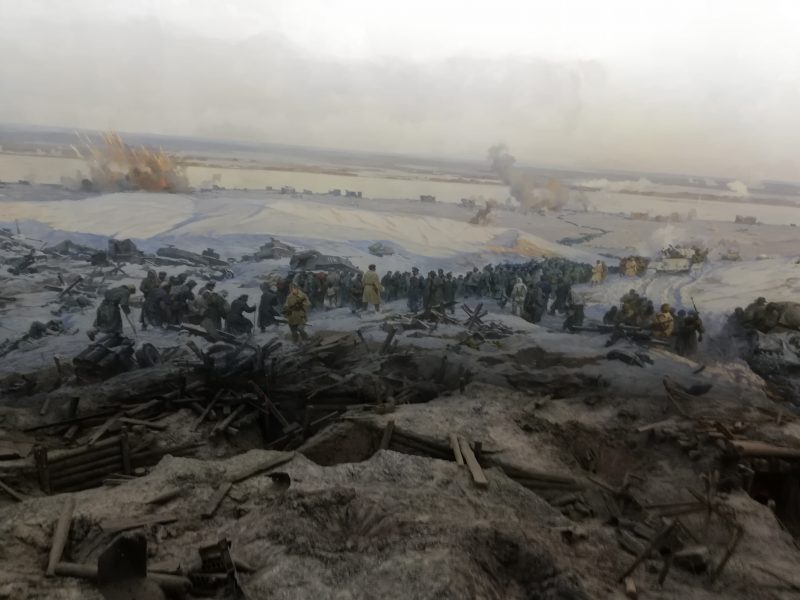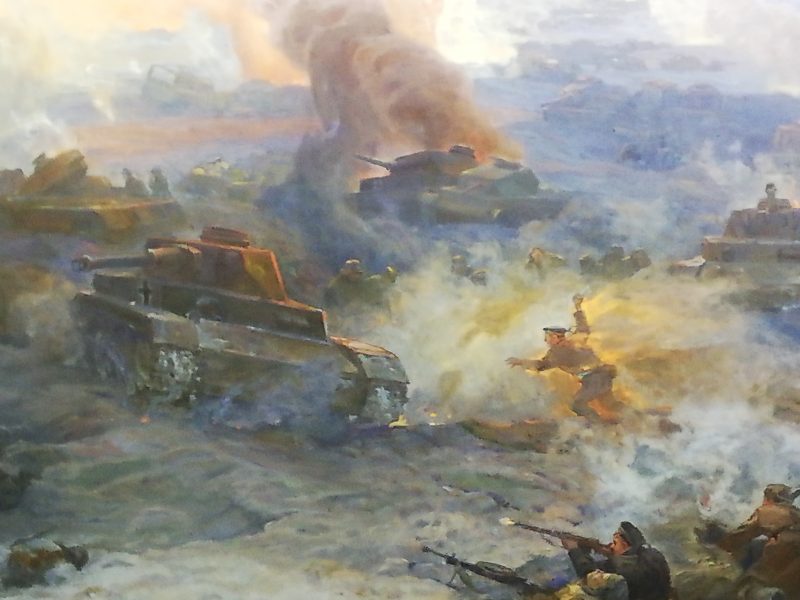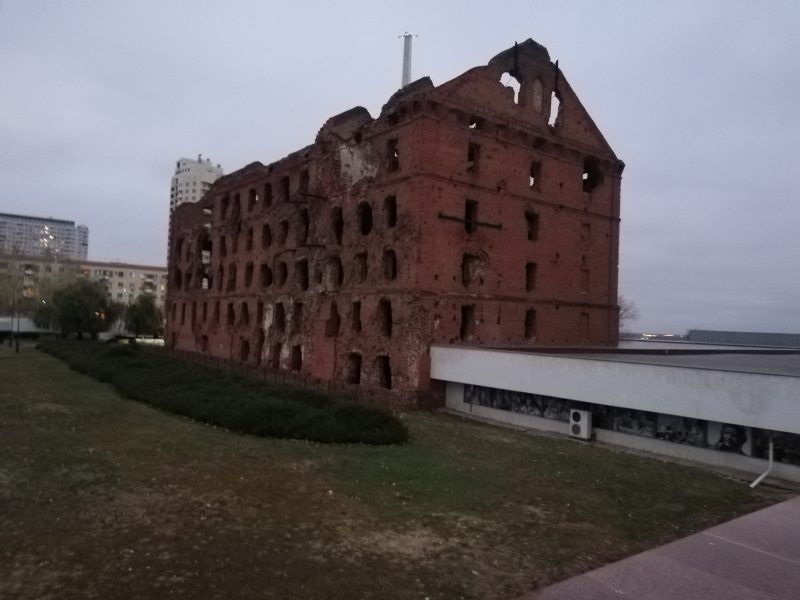We spent much of the 19th relaxing next to the large Islamic graveyard at Kotyayevka and decided to set off for the border about 4 pm in the hope that the Russian border guards would let us in a few hours earlier than the 20th November specified on our visa rather than send us back to Kazakhstan. We got through the Kazakh border post with no problem despite a burly but jovial guard wanting to know if I had any guns, Kalashnikovs, sturgeon or fish, and picked up a Kazakh hitch-hiker, a young student wanting to go to university in Astrakhan.
The folks at the Russian border post were very friendly and their commander made a long phone call trying to get permission for us to go through early, but with no luck. A rather shame-faced youth came out to tell us we had to go back, but the hitch-hiker continued on his way. We drove back to the Kazakh border (there is a 7-mile no-mans land between the two borders) and parked for the next 8 hours. A young Kazakh guard with a huge gun on his back came out and wanted to know what we were doing, and found it highly amusing when I told him. The same lad came out again at 23.30 and told us it was time to go.
The Russian border staff had changed shifts so we expected some hassle, but it all went very smoothly. Buying insurance allowed us to meet a very sweet lady who told us that she was celebrating her 49th birthday but she didnt seem to know what she was doing because she didn’t get any British people coming through this border. A lovely soul, who kept telling us her life story and stroking her sweet little tortoiseshell cat. Took her 90 minutes to do a 10-minute job but eventually we were off and got to bed at the side of a small side-road about 2 am.
On the 20th, we drove the 284 miles to Volgograd and our hotel (we have to stop in hotels in Russia) was at the side of one of the two major north-south roads running through Volgograd. For reasons I can’t explain, I took a wrong turning, crossed the Volga without realising and were going in completely the wrong direction until a very helpful man at a filling station put me right. Managed to get lost again and finished up on the northern edge of the city until I found out where we were on Mapsme, and eventually got to the hotel. Very basic, but warm, comfortable and clean, can’t complain for £10 a night each.
On the 21st we drove to the Mamayev Kurgan on the northern edge of the city which was the scene of some of the bitterest fighting in the Battle of Stalingrad. About 80,000 Soviet soldiers died on this small hill and its surroundings. There is now a massive statue, a monument with an eternal flame and a beautiful little church. We also visited the Stalin Museum; the city’s name was changed from Tsaritsyn to Stalingrad because Stalin served here during the 1918-1920 Civil War between the reds and the whites. Two coffees and a bar of chocolate in the Stalin Cafe cost us £10! In the ultimate irony, the £5 bar of chocolate was made by Ritter in Germany!
We then went to see the spectacular Museum of the Battle of Stalingrad, which we struggled to find until we realised everyone calls it the “Panorama”. It is full of pictures of people who fought in the battle, tanks, anti-aircraft guns, machine guns (including one which bursts into life as you walk past it and scares the shit out of you), army uniforms including one of a General with 235 bullet holes in it, letters from serving soldiers and photoes of their families (very poignant, shows the human side of the battle). But the spectacular climax is reached after you walk a long circular stairway to the roof where you are confronted by a 360-degree model of Stalingrad (the “Panorama”) depicting major scenes from the battle. They include the famous event when Mikhail Panikakha’s molotov cocktail blew up in his face and set him on fire so he dived under a German tank and blew it up. The Panorama shows the Mamayev Hill covered in dead bodies, and a long line of German prisoners being lead away when they finally surrendered. Not many pics of the museum as they aren’t allowed!
The Axis powers (Germany, Romania, Hungary, Croatia and Finland) lost 878,000 dead, wounded and captured, while the Soviets lost 478,000 dead and 650,000 wounded. This was not only the greatest battle in the history of warfare, but the turning point in WW2, after which the Germans were chased all the way back to Berlin.
